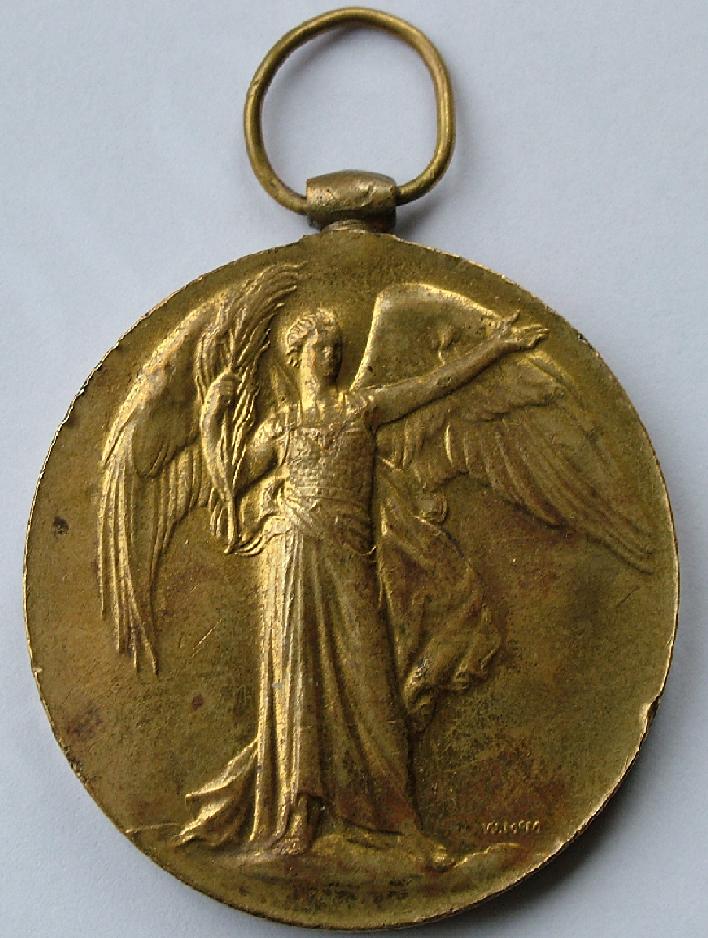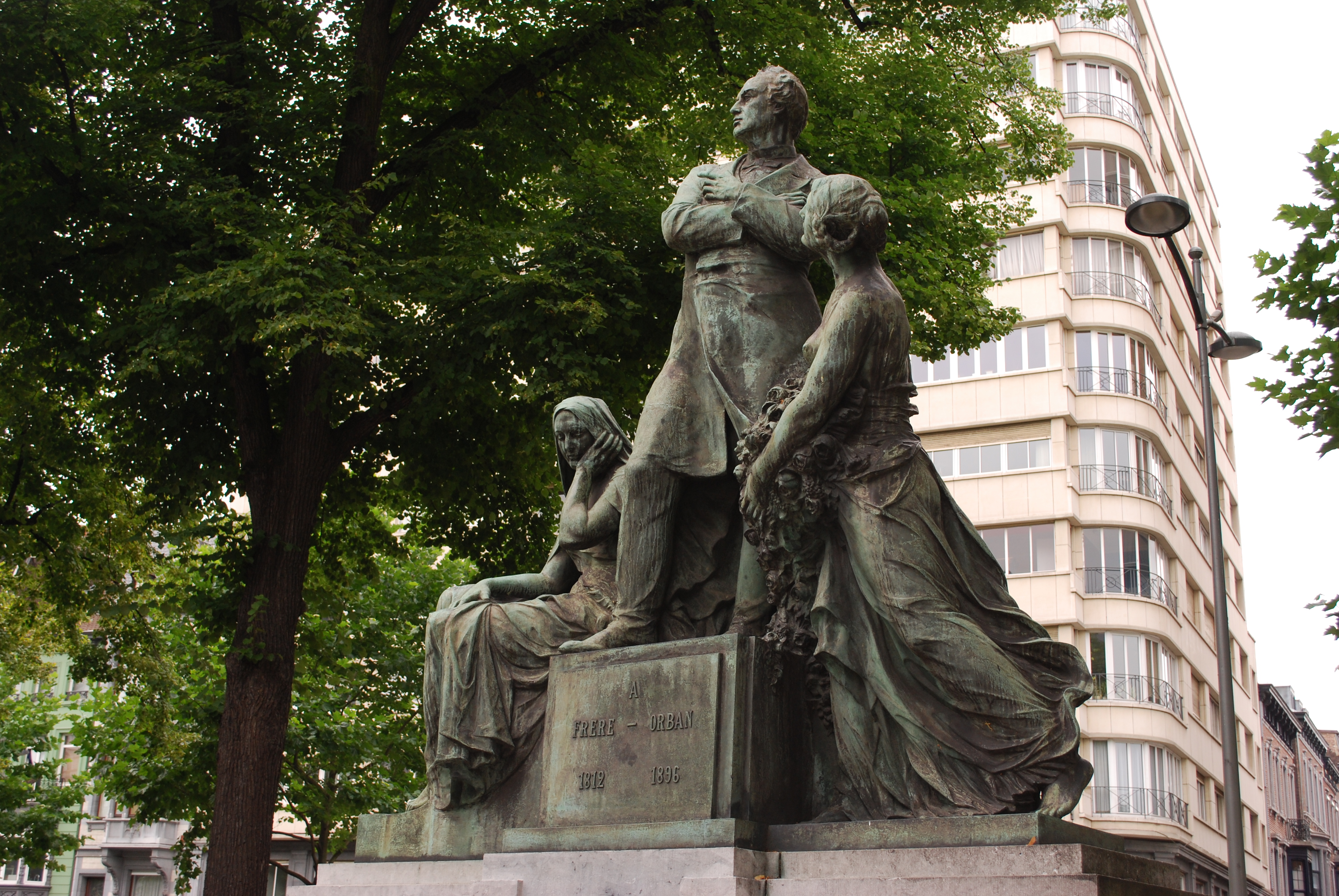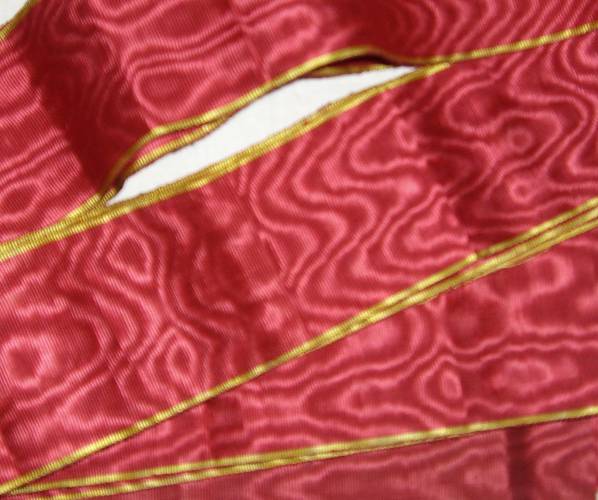|
Victory Medal (UK)
The Victory Medal (also called the Inter-Allied Victory Medal) is a United Kingdom and British Empire First World War campaign medal. The award of a common allied campaign medal was recommended by an inter-allied committee in March 1919. Each allied nation would design a 'Victory Medal' for award to their own nationals, all issues having certain common features, including a winged figure of victory on the obverse and the same ribbon. Fourteen countries finally awarded the medal. Eligibility The Victory Medal (United Kingdom) was issued to all those who received the 1914 Star or the 1914–15 Star, and to most of those who were awarded the British War Medal. It was not awarded singly. To qualify, recipients need to have served in the armed forces of the United Kingdom or the British Empire, or with certain recognised voluntary organisations, and have entered any theatre of war between 5 August 1914 and 11 November 1918. While home service did not count, United Kingdom based me ... [...More Info...] [...Related Items...] OR: [Wikipedia] [Google] [Baidu] |
North Russia Campaign
The North Russia intervention, also known as the Northern Russian expedition, the Archangel campaign, and the Murman deployment, was part of the Allied intervention in the Russian Civil War after the October Revolution. The intervention brought about the involvement of foreign troops in the Russian Civil War on the side of the White movement. The movement was ultimately defeated, while the Allied forces withdrew from Northern Russia after fighting a number of defensive actions against the Bolsheviks, such as the Battle of Bolshie Ozerki. The campaign lasted from March 1918, during the final months of World War I, to October 1919. Reasons behind the campaign In March 1917, after the abdication of Russian Tsar Nicholas II and the formation of a provisional democratic government in Russia, the U.S. entered World War I. The U.S. government declared war on the German Empire in April (and later upon Austria-Hungary) after learning of the former's attempt to persuade Mexico to join ... [...More Info...] [...Related Items...] OR: [Wikipedia] [Google] [Baidu] |
Paul Du Bois
Paul Du Bois (; 1859–1938) was a Belgian sculptor and medalist, born in Aywaille, and died in Uccle, a municipality of Brussels (Belgium). Du Bois was a student of Eugène Simonis and Charles van der Stappen. He studied from 1877 to 1883 at the Académie Royale des Beaux-Arts in Brussels and earned the distinguished Prix Godecharle in 1884. Du Bois contributed to the renewal of artistic expression in Belgium at the end of the 20th century, and was one of the founders of the art group Les XX. His own eclectic work consists of small sculptures, medals, jewelry, fine art sculpture, public monuments, and tombs. Among his most famous monumental works, located in Brussels, are the monument to Frederic de Merode on Martyrs' Square in Brussels, and the tribute to Edith Cavell and fellow nurse Marie Depage (of the RMS ''Lusitania''), the ''Four Elements'' group in the Botanical Garden of Brussels, and several sculptures in the municipality of Saint-Gilles. He was also resp ... [...More Info...] [...Related Items...] OR: [Wikipedia] [Google] [Baidu] |
Belgium
Belgium, ; french: Belgique ; german: Belgien officially the Kingdom of Belgium, is a country in Northwestern Europe. The country is bordered by the Netherlands to the north, Germany to the east, Luxembourg to the southeast, France to the southwest, and the North Sea to the northwest. It covers an area of and has a population of more than 11.5 million, making it the 22nd most densely populated country in the world and the 6th most densely populated country in Europe, with a density of . Belgium is part of an area known as the Low Countries, historically a somewhat larger region than the Benelux group of states, as it also included parts of northern France. The capital and largest city is Brussels; other major cities are Antwerp, Ghent, Charleroi, Liège, Bruges, Namur, and Leuven. Belgium is a sovereign state and a federal constitutional monarchy with a parliamentary system. Its institutional organization is complex and is structured on both regional ... [...More Info...] [...Related Items...] OR: [Wikipedia] [Google] [Baidu] |
Mercantile Marine War Medal
The Mercantile Marine War Medal was established in 1919 and awarded by the Board of Trade of the United Kingdom to mariners of the British Mercantile Marine (later renamed the Merchant Navy) for service at sea during the First World War.The Mercantile Marine War Medal – 1914–1918 (Access date 30 March 2015)Mackay, J and Mussel, J (eds) – ''Medals Yearbook – 2007'', Token Publishing. p175. /ref> Institution Between 5 August 1914, the day following the British declaration of war against the German Empire, and the armistice of 11 November 1918, 2,479 British merchant ves ...[...More Info...] [...Related Items...] OR: [Wikipedia] [Google] [Baidu] |
Mutt And Jeff
''Mutt and Jeff'' was a long-running and widely popular American newspaper comic strip created by cartoonist Bud Fisher in 1907 about "two mismatched tinhorns". It is commonly regarded as the first daily comic strip. The concept of a newspaper strip featuring recurring characters in multiple panels on a six-day-a-week schedule had previously been pioneered through the short-lived '' A. Piker Clerk'' by Clare Briggs, but it was ''Mutt and Jeff'' as the first successful daily comic strip that staked out the direction of the future trend. ''Mutt and Jeff'' remained in syndication until 1983, employing the talents of several cartoonists, chiefly Al Smith who drew the strip for nearly fifty years. The series eventually became a comic book, initially published by All-American Publications and later published by DC Comics, Dell Comics and Harvey Comics. Later it was also published as cartoons, films, pop culture merchandise and reprints. Syndicated success Harry Conway "Bud" ... [...More Info...] [...Related Items...] OR: [Wikipedia] [Google] [Baidu] |
Pip, Squeak And Wilfred
''Pip, Squeak and Wilfred'' was a British strip cartoon published in the ''Daily Mirror'' from 1919 to 1956 (with a break c. 1940–1950), as well as the '' Sunday Pictorial'' in the early years. It was conceived by Bertram Lamb, who took the role of Uncle Dick, signing himself (B.J.L.) in an early book, and was drawn until c. 1939 by Austin Bowen Payne, who always signed as A. B. Payne. It concerned the adventures of an orphaned family of animals. Pip, who assumed the "father" role, was a dog, while the "mother", Squeak, was a penguin. Wilfred was the "young son" and was a rabbit with very long ears. Character beginnings The characters Pip, Squeak and Wilfred were created by Bertram Lamb, a journalist on the ''Daily Mirror'', who was born in Islington, London, on 14 May 1887 and died in Switzerland in 1938. He never drew the cartoons, but thought up the idea of the characters. The origins of the characters are mentioned in the cartoon strips. Squeak was found in the London Zo ... [...More Info...] [...Related Items...] OR: [Wikipedia] [Google] [Baidu] |
Iridescent
Iridescence (also known as goniochromism) is the phenomenon of certain surfaces that appear to gradually change color as the angle of view or the angle of illumination changes. Examples of iridescence include soap bubbles, feathers, butterfly wings and seashell nacre, and minerals such as opal. It is a kind of structural coloration that is due to wave interference of light in microstructures or thin films. Pearlescence is a related effect where some or most of the reflected light is white. The term pearlescent is used to describe certain paint finishes, usually in the automotive industry, which actually produce iridescent effects. Etymology The word ''iridescence'' is derived in part from the Greek word ἶρις ''îris'' ( gen. ἴριδος ''íridos''), meaning ''rainbow'', and is combined with the Latin suffix ''-escent'', meaning "having a tendency toward". Iris in turn derives from the goddess Iris of Greek mythology, who is the personification of the rainbow and a ... [...More Info...] [...Related Items...] OR: [Wikipedia] [Google] [Baidu] |
Moire (fabric)
Moire ( or ), less often moiré, is a textile with a wavy (watered) appearance produced mainly from silk, but also wool, cotton and rayon. The watered appearance is usually created by the finishing technique called calendering. Moire effects are also achieved by certain weaves, such as varying the tension in the warp and weft of the weave. Silk treated in this way is sometimes called watered silk.Encyclopædia Britannica 1949, volume 15, p. 661 Method of production Moire is produced from two distinctly different methods of finishing. Calendering produces the true moire, known as "moire antique" and "moire Anglaise", which is a purely physical phenomenon. In calendering, the fabric is folded lengthwise in half with the face side inward, and with the two selvedges running together side by side. To produce moire, ribbed rollers are used, and the ribs produce the watermark effect. The rollers polish the surface and make the fabric smoother and more lustrous. High temperatures and ... [...More Info...] [...Related Items...] OR: [Wikipedia] [Google] [Baidu] |
Laurel Wreath
A laurel wreath is a round wreath made of connected branches and leaves of the bay laurel (), an aromatic broadleaf evergreen, or later from spineless butcher's broom (''Ruscus hypoglossum'') or cherry laurel (''Prunus laurocerasus''). It is a symbol of triumph and is worn as a chaplet around the head, or as a garland around the neck. The symbol of the laurel wreath traces back to Ancient Greece. In Greek mythology, the god Apollo, who is patron of lyrical poetry, musical performance and skill-based athletics, is conventionally depicted wearing a laurel wreath on his head in all three roles. Wreaths were awarded to victors in athletic competitions, including the ancient Olympics; for victors in athletics they were made of wild olive tree known as ''" kotinos"'' (), (sc. at Olympia) – and the same for winners of musical and poetic competitions. In Rome they were symbols of martial victory, crowning a successful commander during his triumph. Whereas ancient laurel wreaths are mos ... [...More Info...] [...Related Items...] OR: [Wikipedia] [Google] [Baidu] |
Buckingham Palace
Buckingham Palace () is a London royal residence and the administrative headquarters of the monarch of the United Kingdom. Located in the City of Westminster, the palace is often at the centre of state occasions and royal hospitality. It has been a focal point for the British people at times of national rejoicing and mourning. Originally known as ''Buckingham House'', the building at the core of today's palace was a large townhouse built for the Duke of Buckingham in 1703 on a site that had been in private ownership for at least 150 years. It was acquired by King George III in 1761 as a private residence for Queen Charlotte and became known as The Queen's House. During the 19th century it was enlarged by architects John Nash and Edward Blore, who constructed three wings around a central courtyard. Buckingham Palace became the London residence of the British monarch on the accession of Queen Victoria in 1837. The last major structural additions were made in the late 19th ... [...More Info...] [...Related Items...] OR: [Wikipedia] [Google] [Baidu] |
Victoria Memorial, London
The Victoria Memorial is a monument to Queen Victoria, located at the end of The Mall in London, and designed and executed by the sculptor (Sir) Thomas Brock. Designed in 1901, it was unveiled on 16 May 1911, though it was not completed until 1924. It was the centrepiece of an ambitious urban planning scheme, which included the creation of the Queen’s Gardens to a design by Sir Aston Webb, and the refacing of Buckingham Palace (which stands behind the memorial) by the same architect. Like the earlier Albert Memorial in Kensington Gardens, commemorating Victoria's consort, the Victoria Memorial has an elaborate scheme of iconographic sculpture. The central pylon of the memorial is of Pentelic marble, and individual statues are in Lasa marble and gilt bronze. The memorial weighs 2,300 tonnes (about 2535 short tons) and is 104 ft wide. In 1970 it was listed at Grade I. History Proposal and announcements King Edward VII suggested that a joint Parliamentary committee should be ... [...More Info...] [...Related Items...] OR: [Wikipedia] [Google] [Baidu] |







.jpg)
